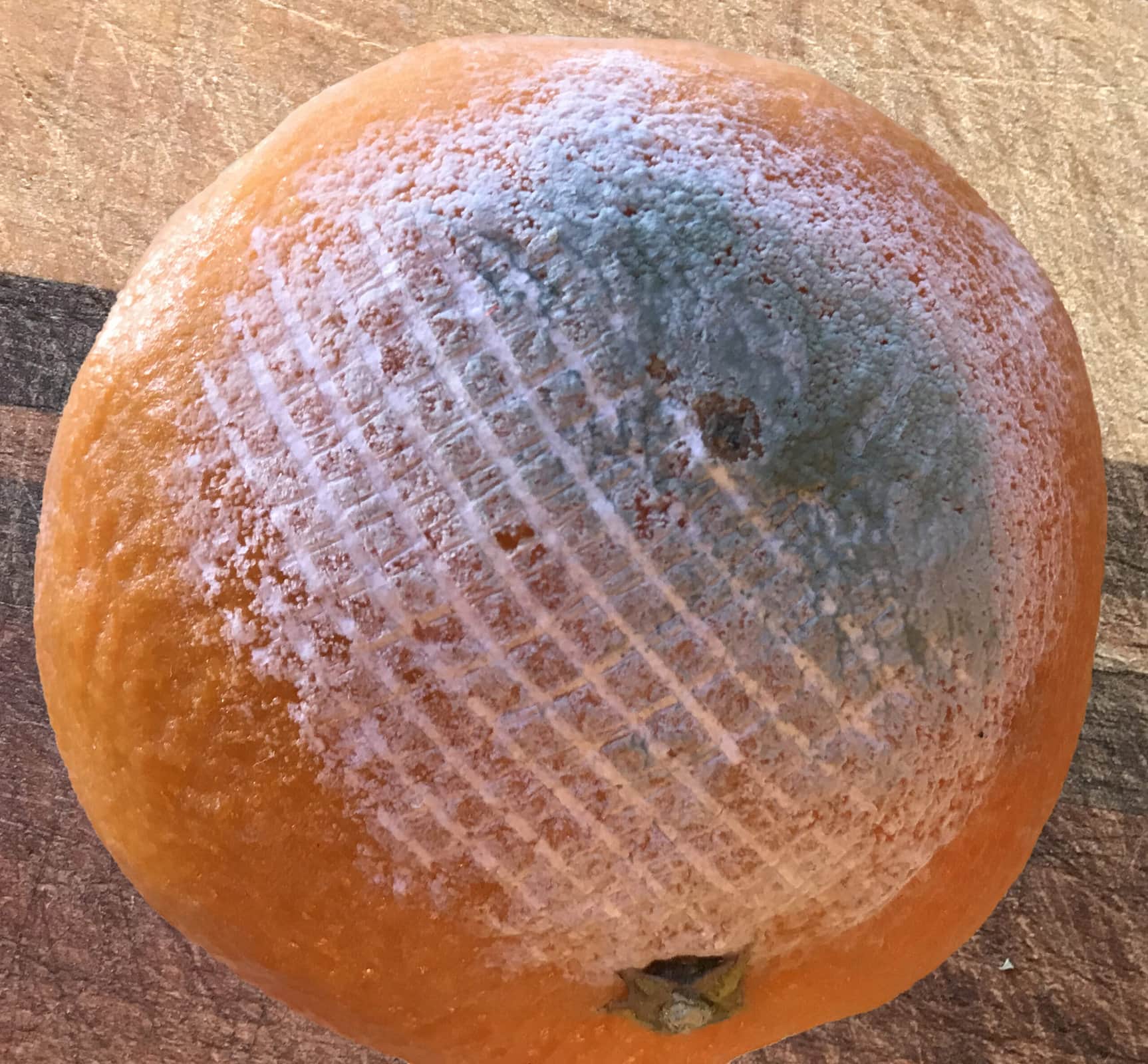
When winter weather doesn’t exactly lure you outside, how can you enjoy looking for wildlife while indoors? Well, you might look in your refrigerator. This sounds weird, but perhaps there’s an orange in there with something growing on it. You know, the blue-green mold that sometimes appears on an orange or a lemon. Most likely, it’s a close relative of the Penicillium mold that gave us penicillin.
Are you curious? Scottish researcher Alexander Fleming was curious. Back in 1928, he noticed that the bacteria he was growing in a lab dish weren’t growing around a fuzzy mold that had contaminated the lab dish. Instead of throwing out the contaminated lab dish, he investigated. He realized that the mold might be producing something that was inhibiting the growth of the bacteria. He eventually identified the mold. (He called it Penicillium rubrum, but it has since been called Penicillium notatum, Penicillium chrysogenum, and most recently, Penicillium rubens). Fleming found the chemical it was producing, which he named penicillin.
After this happy accidental discovery, Fleming moved on to other research. After a decade or so, the onset of World War II brought pressure on the scientific community to find ways of curing deadly infections resulting from wounds of war. Such infections had killed many soldiers in World War I. Building on Fleming’s work, other scientists pursued research into penicillin. They eventually found a strain of the mold that produced larger quantities of penicillin – enough to make a medicine. That strain came from a moldy cantaloupe. Industrial production got under way, and in 1943 the antibiotic penicillin became widely available. It saved the lives of countless wounded soldiers in WWII.
Fleming and two other scientists, Ernest Boris Chain and Howard Walter Florey, received the Nobel Prize in Medicine in 1945 “for the discovery of penicillin and its curative effect in various infectious diseases.”
If you find a moldy orange in your fridge, don’t feel bad. The mold lives in the soil, and the spores it uses to spread are everywhere. In citrus season, at this time of year, fruit gets jostled and bumped in shipment. Slight damage to its skin can allow spores to infect the fruit.
Is it odd to think of a mold as wildlife? Maybe not. We think of wild animals as wildlife and of wild plants as, well, wild plants. The mold on fruit is a wild fungus, though neither plant nor animal. Plants, animals, and fungi differ in how they get food. Plants make their own food from carbon dioxide in the air, water, and sunlight. Animals digest pre-existing food internally, releasing digestive chemicals into their tube-like digestive tract, and absorbing the results. And fungi? Like animals, they release digestive chemicals, but not inside themselves. They release chemicals into their environment to digest pre-existing food outside themselves. Then they absorb the results. In this way, fungi are actually more similar to animals than to plants, which actually make food.
So is penicillin a digestive chemical? No, it’s a defensive chemical. It acts against a broad category of bacteria, which might compete for food in the mold’s environment. Penicillin interferes with the chemical process that these bacteria use to build their own cell walls (something animal cells don’t have). In a natural environment, penicillin keeps these bacteria away from the mold’s food. When a human with a bacterial infection takes the medicine penicillin, it acts on bacteria infecting the human body. (It also sometimes upsets our digestion because it can act on helpful bacteria living in our digestive system. Occasionally, a human’s immune system triggers a reaction against the medicine.)
The story of penicillin and information about it are greatly simplified here. Further research led to numerous other, related antibiotics and to “the age of antibiotics” in which we’ve lived since the 1950s. The DNA of penicillin-producing mold was sequenced by 2011. Research continues. Scientists are also finding new uses for other fungi. One example is myco-remediation, or using fungi to remove contaminants from water and soil.
As you toss out that moldy orange, you might send an appreciative thought its way.
What else might nature offer this winter? See the WCLT Nature Notes online monthly index for February and March.
Do you know that Westborough has 60 miles of trails, and WCLT has trail maps? The Westborough Community Land Trust (WCLT) preserves, protects, and promotes open space in Westborough (westboroughlandtrust.org and facebook.com/westboroughlandtrust).
















